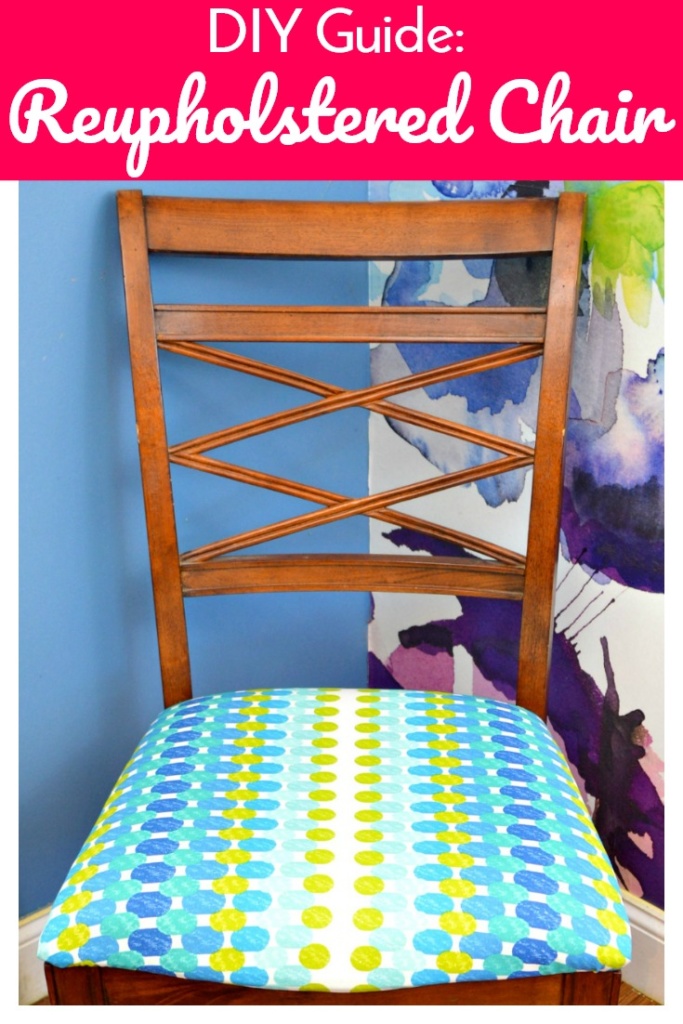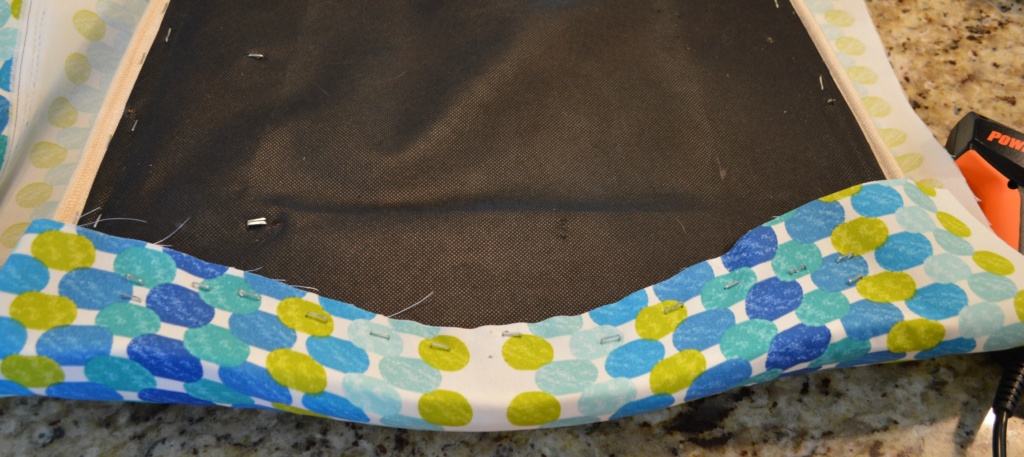I bought a beautiful dining set when I moved into this house almost 10 years ago. The only thing I realized later that I did not like about it was the fabric on the cushions. It was off-white which meant two things. It was boring and it got VERY dirty very easily. Well, that little problem has been rectified! I reupholstered the chairs (ok, I’ve only done two so far, but I’m 1/3 of the way there). They came out great and I can’t wait to tell you how easy it was! I present, New Upholstery for My Dining Chairs – A DIY Guide. ***This post contains affiliate links. If you click one and make a purchase I may receive a commission at no cost to you! Thank you for supporting Lifestyle for Real Life!***
Materials
Screw Driver
Scissors
A chair with a cushion you want to recover
Instructions
Step 1: The first step in this project, as with any project, is to gather your supplies. I wrote all about finding my fabric on-line at Fabric.com in this post, so be sure to check out! A couple of notes on picking out fabric specifically for this project, the fabric I chose was a teensy bit difficult to deal with because of that straight, white column down the middle. That meant that I had to make sure my fabric was lined up correctly and that center line stayed centered. It also meant it was important to cut the fabric so that I could get two seat cushions out of the width of the fabric. I bought 54″ wide fabric and it was just the right size to get two seat cushions from, width wise. If you are looking for something that you don’t have to worry about lining up, pick something like a floral that doesn’t have an obvious repeating pattern. Other than that, this fabric was a joy and a wonder to work with. You want to make sure you pick a fabric that comes in at least 54″ width in order to cover two cushions out of the width. Unless you have super weird wide chair bottoms and then you may need to go wider. You can measure your seat cushion across and then add 6 inches to the width to be sure it’s wide enough.
You will also need some type of staple gun for this. I used an electric one which I admit gives me a mini heart attack everytime I use it, but I didn’t have staples for my mechanical one, so I’m sure I’m due for a bypass any day now. I used the Arrow Fastener 9100K PowerShot Pro Electric Staple and Nail Gun and it’s very simple to use. There are lots of mechanical staple guns available on Amazon, like this one, if you choose to go that route. Honestly, the Electric one is way easier and faster, but trust me I get it if you’re a little nervous with the power tools.
Step 2: Remove your seat cushion. For some reason, I thought this would be difficult. I was wrong. Just turn your chair over on your counter, find where the screws are that hold the seat on and unscrew them. Voila, seat cushion removed.
Step 3: Cut your fabric. Be careful and think this through before you cut, okay? Fabric is expensive and you don’t want to waste any. You want to try to have 3 inches of overlap on every side. Put your seat cushion on top of the fabric and fold up all of the sides to make sure you have at least that. If you picked a fabric like mine with an obvious “center”, make sure you are leaving enough fabric on the other half of the width to cover your next chair. Luckily, my 54″ fabric was just the right width to cover two seat covers with another overlap on both sides to be able to staple it underneath. When you are sure you have it right, cut the fabric.
Step 4: Start stapling. You want to start in the middle of the front of your cushion. Pulling the fabric tightly, pop in one or two staples on that end and then do the same on the opposite end of the cushion.
Don’t forget to pull the fabric tightly! This is super crucial! Your corners will be brutal if you are not pulling tightly every time you staple. And on the topic of stapling, when you are ready to staple, use two hands. Basically it goes sort of like this, pull your fabric very tightly, while still holding fabric, place the staple gun on the fabric, don’t staple yet, but press down while moving your hand that is holding the fabric to the top of the staple gun so that you can press down on the top of the staple gun, then shoot. If you don’t hold the staple gun down from the top, you will find that your staples don’t go all the way into the chair, as you’ll see in my picture below. I figured it out on the second side and had much neater staples, I promise. It’s sounds complicated, but you’ll get the hang of it after a couple of tries. And remember, no one will see that you have some wonky staples underneath your dining chair.
Step 5: Keep stapling. And pulling tightly. Fill in staples from edge to edge on the front and back sides of the cushion, then do the same process of staple one in the middle on both the left and right side of the cushion. Then fill in staples on the left and right side. DON’T FORGET TO PULL TIGHTLY!
Step 6: The corners. The corners can be a pain. There are several tutorials available, but the best method for me was to start by adding a couple of staples to help pull tight any loose fabric (see the first picture below) then fold the flap that is left behind toward the back of the cushion (see the second picture below). When you are folding that flap over, make sure it stays within the underneath portion of the chair. One of my flaps was a little too close to the edge and I could see it when I flipped the cushion over. I didn’t fix every tiny wrinkle, but I did fix that.
I will give you two words of advice on this part. 1 – Staples are removeable. If your corners are really bad, you can totally start again. 2 – Teeny tiny wrinkles like the one you see above at the edge of the chair in the green dot of the fabric, will not necessarily be visible once you flip the cushion over.
When I was happy with my corners, I trimmed some of the excess fabric off. Not all of it. I left enough so that if I ever had to pop a few more staples in, there would be enough fabric to do so. Call me a doomsdayer, but I was planning for that time when the fabric just rips itself out of the staples. Probably won’t ever happen. Probably.
And here’s a peek of the cushion right side up:
Step 7: Reattach your cushion to the chair. This sounds simple, but you do have to make sure that you place the cushion back on just as it was before. The first time I reattached it, I was actually off to the right a smidge and it was not a good look. I ended up standing the chair on an ottoman so that I could place the cushion on correctly and still have enough room to look underneath and figure out where the screws were supposed to go. By the way, you may have a moment when you’re about to reattach the cushion where you realize you’ve covered the screw holes on the seat with fabric! Don’t worry, it didn’t really make any difference. Once I had the cushion aligned correctly, the screws went through the fabric and into the screw holes just as they should.
And that’s it friends! Ooh! Wait, I never showed you the before:
So not pretty and so not clean, eww. I’m so happy with the outcome!











